SEARCH SITE
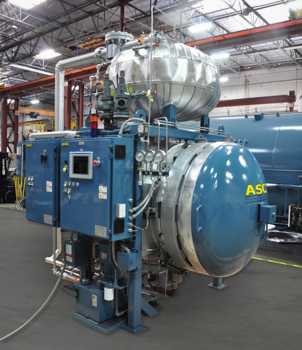
Investment Casting Autoclave Systems
ASC designs and manufactures dewaxing autoclaves used in the investment casting industry.
The Process
In the investment casting process, casting wax is injected into a metal die in order to create a solidified wax positive of the part to be cast. This wax positive is called a "pattern". The wax pattern is then dipped in a ceramic slurry to form an external ceramic shell negative.
Once the ceramic shell is created, a dewaxing autoclave is used to melt and remove the internal casting wax from ceramic shells.
The ceramic shell is then fired and ultimately used as the mold cavity for the metal casting.
Controlled venting
ASC's investment autoclave systems come equipped with proportional vent valve systems to provide programmable control of the venting process. This is critical in order to reduce cracking of the shells.
Click here for addition dewaxing/investment casting Econclave systems
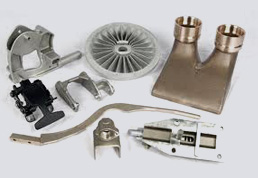
Investment cast parts
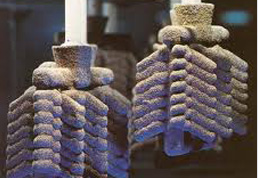
Casting shells
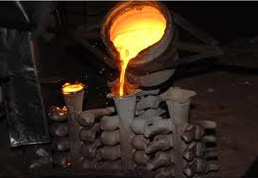
Casting into shells

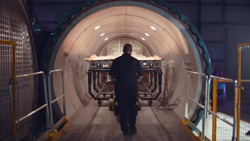
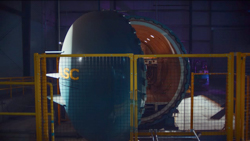
Automotive Composites
Many advancements in the automotive industry have come from the race tracks of the world. For some time now, composites have played a major role in improving the performance of automotive racing, as blown fuel dragsters, NASCAR, and Formula One have each experienced tremendous gains. With demand for higher performance and energy efficiency, the commercial automotive sector has joined the race by integrating the advanced carbon fiber composites found in racing into the cars we see and admire on the road today.
ASC Process Systems is no stranger to the automotive composites movement. Automobiles like the Chevy Corvette and the Dodge Viper SRT have taken the lead in high-performance consumer automobiles by utilizing ASC’s Econoclave® to cure their composite components. Like Chevy and Dodge, many high performance and luxury automotive manufacturers have been able to achieve higher performance and better fuel economy through more complex designs with the use of carbon fiber composites.
Choosing the right bonding equipment for your project
As the leading manufacturer of composite curing autoclaves and ovens, no matter the size or complexity of your composite parts, our sales team can help you find the right composite bonding equipment for your requirements.
Oven Curing
 With the growing popularity of carbon fiber composite car parts, automotive manufacturers and aftermarket companies have come a long way in curing composites with the use of ovens and room temperature vacuum-bagged composite cures. For many non-structural parts, the use of a composite curing oven a great solution. An ASC built curing oven has many of the same features found in an autoclave, including the CPC control system, part thermocouples to control and monitor your part during a cure cycle, part vacuum line systems to enable vacuum bagging of parts, and much more.
With the growing popularity of carbon fiber composite car parts, automotive manufacturers and aftermarket companies have come a long way in curing composites with the use of ovens and room temperature vacuum-bagged composite cures. For many non-structural parts, the use of a composite curing oven a great solution. An ASC built curing oven has many of the same features found in an autoclave, including the CPC control system, part thermocouples to control and monitor your part during a cure cycle, part vacuum line systems to enable vacuum bagging of parts, and much more.
Autoclave Curing
 When the finer detail, tighter tolerance, lighter weight, increased strength, and lower porosity matter, an autoclave is a next step in composites processing. With the introduction of pressure that is required to achieve advanced aerospace-grade composites, the autoclave is able to take the composites' oven cure one step further. Like the ASC composites curing oven, the Econoclave® comes standard with CPC® controls, part thermocouples, part vacuum lines, and also includes a feature not commonly found in curing ovens, the ability to apply cooling to the part, thus increasing production time and allowing for the safe handling of your part post-cure.
When the finer detail, tighter tolerance, lighter weight, increased strength, and lower porosity matter, an autoclave is a next step in composites processing. With the introduction of pressure that is required to achieve advanced aerospace-grade composites, the autoclave is able to take the composites' oven cure one step further. Like the ASC composites curing oven, the Econoclave® comes standard with CPC® controls, part thermocouples, part vacuum lines, and also includes a feature not commonly found in curing ovens, the ability to apply cooling to the part, thus increasing production time and allowing for the safe handling of your part post-cure.
Autoclaves for Ballistic Armor
Ballistic armor is fabricated from a mix of composite materials, steel, silica, and ceramics. In order to increase the quality of the final product, most armor must be bonded and cured in composite curing autoclaves.
ASC's ballistic-capable Econoclave is used to manufacture the composite structures that are ultimately assembled into the final delivered armor.
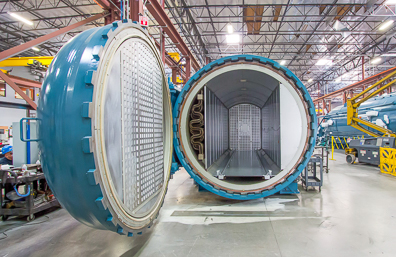
Interior of Ballistic Glass Laminating Econoclave
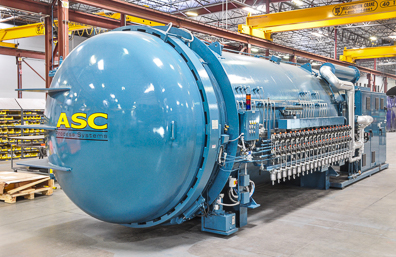
Econoclave for Ballistics manufacturing
As the use of IEDs (improvised explosive device) increased during the recent conflicts in Iraq and Afghanistan, the US and International military units saw the immediate need to improve both the body armor given to each soldier and the armor assembled into personnel vehicles. The goal was to increase survivability, and the result was a focused plan to develop and manufacture more and better armor
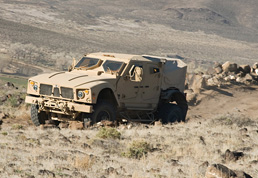
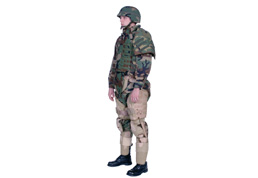
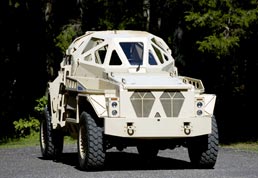
ASC's autoclaves and control systems have become instrumental in the production of ballistic armor. Our high-pressure composite curing autoclave system, known worldwide as the Econoclave, is ballistic-capable, rated for high-pressure, and is used by the world's largest armor producers.
AAC Concrete Autoclave Systems
Autoclaved aerated concrete (AAC) is a highly thermally insulated concrete-based material used for both internal and external construction. AAC has excellent thermal insulating qualities and is also easily installed. Another benefit is that it can be routed, sanded, and cut to size on-site using standard carbon steel tools.
Autoclaves are used to cure AAC using live steam. These autoclaves are usually very long in order to accommodate rail-car loading techniques. ASC designs and manufactures AAC autoclaves for many of the leading AAC producers.
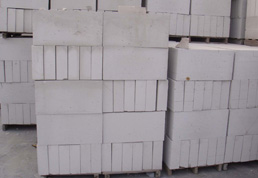
Aerated Concrete ready to ship.
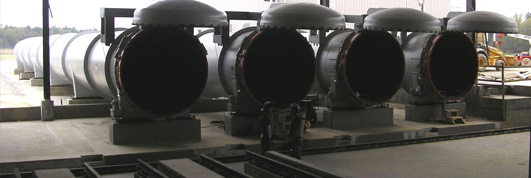
Econoclave AAC Autoclaves being installed in the US concrete factory.
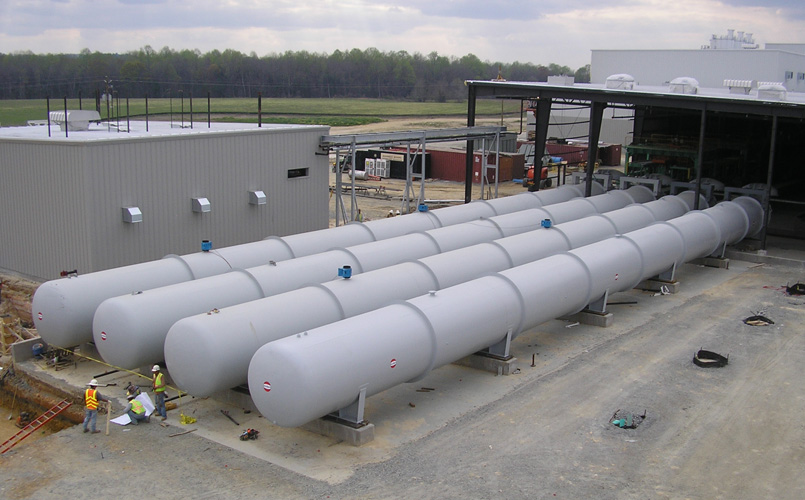
Exterior shot of four AAC autoclaves (195 ft. / 59m long)
Thermal Processing Equipment for the Nuclear Fuel Industry
ASC Process Systems is a U.S.-based manufacturer with decades of experience supporting the nuclear fuel production supply chain with specialized thermal processing equipment. Our solutions are used and trusted by nuclear fuel facilities across the U.S. for their safety, reliability, and regulatory compliance.
Our Nuclear Industry Design and Manufacturing Capabilities Include:
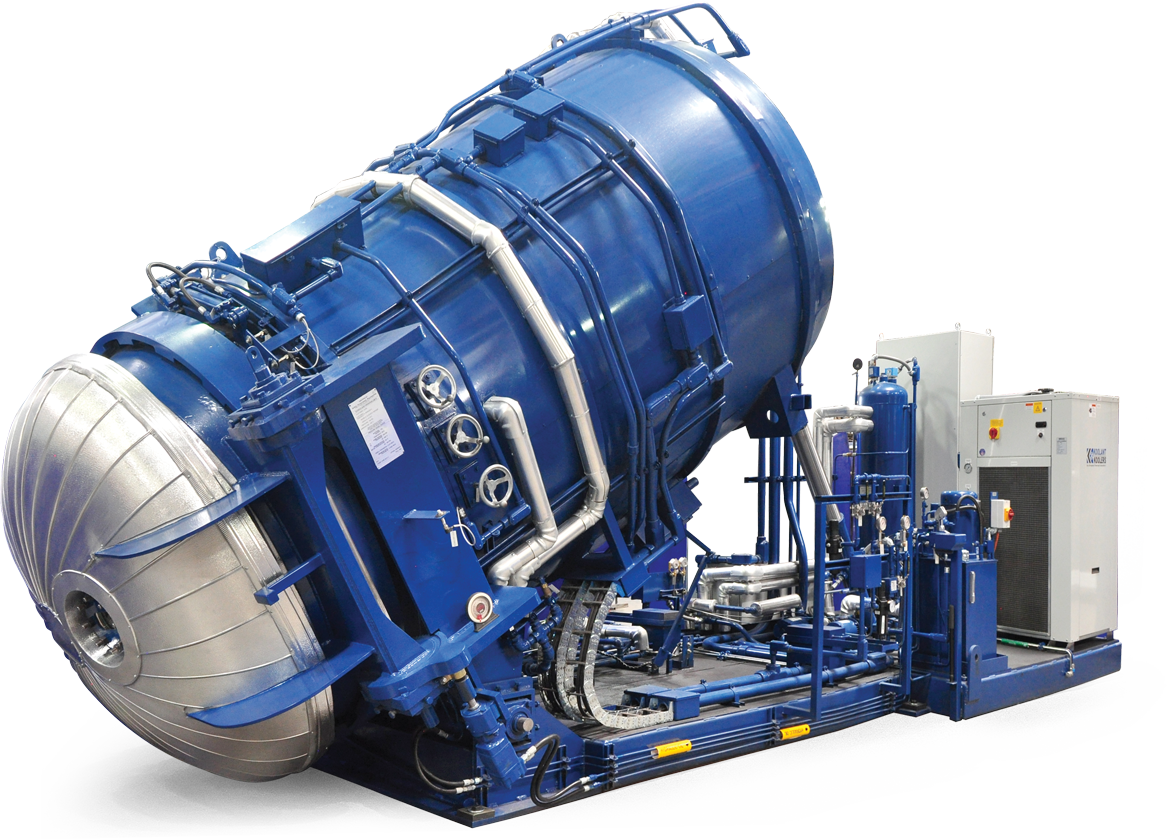
Sampling Containment Autoclaves
ASC Process Systems has years of experience in designing and manufacturing UF₆ sampling containment autoclaves, which are essential for the safe and accurate melting and extraction of UF₆ samples during the enrichment cycle. Our autoclaves are built for precision, durability, and ASME requirements for Lethal Service, ensuring safe operation under demanding conditions.
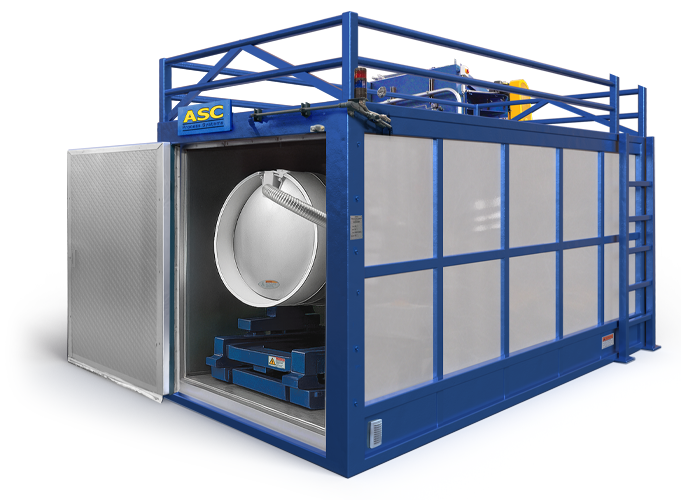
Heating and Cooling Stations
In addition to autoclaves, we offer a comprehensive range of heating (hot box) and cooling (cold box) equipment designed explicitly for sublimation and desublimation of UF₆, within 30B, 30C, 48X, and 48Y cylinders. These systems are designed for consistent thermal control, efficient performance, and enhanced operational safety.
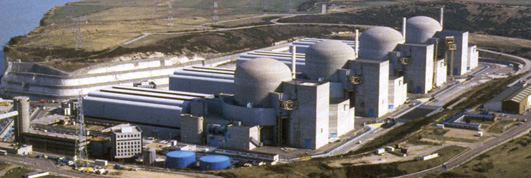
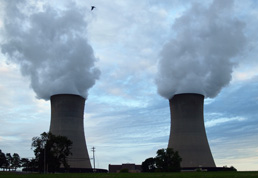
Our Quality Management System
ASC is certified to ASME, and our QMS is certified to ISO9001/2015. Additionally, we have passed multiple commercial-grade dedication audits from our nuclear fuel customers. This underscores our commitment to the highest standards of quality assurance necessary for delivering hardware to the nuclear fuel industry, in accordance with the U.S. Nuclear Regulatory Commission (NRC) regulations.
From design to delivery, ASC Process Systems partners with nuclear organizations to supply American-made, precision-engineered thermal processing equipment built to perform under the strictest safety and compliance standards.
Contact us today to discover how our systems can help support your facility’s mission in the nuclear fuel processing industry.







 AUSTRIA
AUSTRIA BRAZIL
BRAZIL CHINA
CHINA FRANCE
FRANCE GERMANY
GERMANY ITALY
ITALY JAPAN
JAPAN LATIN AMERICA
LATIN AMERICA RUSSIA
RUSSIA SOUTH KOREA
SOUTH KOREA SPAIN
SPAIN UK
UK USA
USA